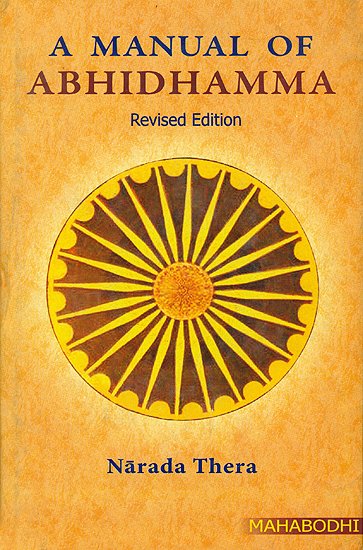Abhidhamma in Daily Life (by Ashin Janakabhivamsa)
by Ashin Janakabhivamsa | 66,666 words
English translation of "Abhidhamma in Daily Life" by Professor Ko Lay. Revised by Sayadaw U Silananda, International Theravada Buddhist Missionary University, Yangon, 1999...
Domain 10 - Ditthijukamma (righteous belief)
Having righteous belief which is just, upright is called ditthijukamma (ditthi = belief, + uju kamma = uprightness). Belief in one’s view of things based on one’s intelligence. When the view is just and righteous, it is called samma ditthi (right understanding). If a wrong, it is called miccha ditthi (wrong understanding). Deeply consider the following:
- Good deeds versus evil deeds.
- The results of such deeds - adverse effects versus good effects.
- The present existence and the forthcoming ones due to one’s good or evil deeds.
- The Devas and Brahmas
- Those who practice the noble way and attain jhana abhinana or become Arahats.
If after profound consideration, you find that the above five are realities, that they really exist, then you possess samma ditthi (right belief). This is also known ditthiju kamma or kammassakata Nana - knowing your deeds are your only assets and knowing the cause effect of one’s own deeds.
If you reject all or one of the above five regarding them as not realities, that they do not really exist, you then possees miccha ditthi (wrong belief). When you reject the cause and effect of one’s deeds you are no more hesitant to take the lives of other beings. When you reject past and future lives, you are more and more inclined to believe in the Creator of the universe. We have ample evidence of the life of Buddha with historical proof; is the any such proof of the existence of a Creator?
Being A Buddhist
We have just said ditthijukamma (righteous belief) is also sammaditthi (right view). Yet we can not say that anyone who possess samma ditthi is a Buddhist. Hindu also believes in kamma and its results. Yet they are not Buddhist. Only those who find refuge in the Buddha, his teachings (Dhamma) and his Holy Order (Sangha) are true Buddhists. One must proclaim, “I take refuge in the Buddha, Dhamma and Sangha” either in Pali or in Myanmar. Only after taking refuge in the Triple Gems one can call oneself a Buddhist. Those who do not fully comprehend the Ti Sarana Gamana (Three Refuges), like children for instance, can be regarded as Buddhist if they devote themselves to the Three Gems following the tradition. (Refer to Ratana Gongyi for further details).
How to Possess Ditthijukamma
Samma ditthi and kammassakata Nana are synonymous with ditthijukamma. When you reason for yourself the cause and effect of kamma and the reality of past and future existence, you achieve ditthijukamma. When you bear in mind that virtuous deeds such as Dana (charity) and Síla (morality) bring good result in forthcoming existences you develop ditthijukamma. The same holds true when you are physically performing the good deeds. The same holds true when you are physically performing the good deeds. The benevolence of all forms of good deeds is greatly enhanced by the accompaniment of ditthijukamma.
The Forty Wholesome Deeds
You are entitled to the benefits of good deeds not only when you actually perform them, but also when you make other perform good deeds, when you explain the good consequences of good deeds to others and when you feel appreciative joy at other’s meritorious deeds. The ten punna kiriya (wholesome deeds) we have already discussed multiplied by four factors namely (a) actual preformance (b) exhorting others (c) explaining the benevolent nature, and (d) feeling appreciative joy, we get the forty wholesome deeds known as the forty punna kariya.
